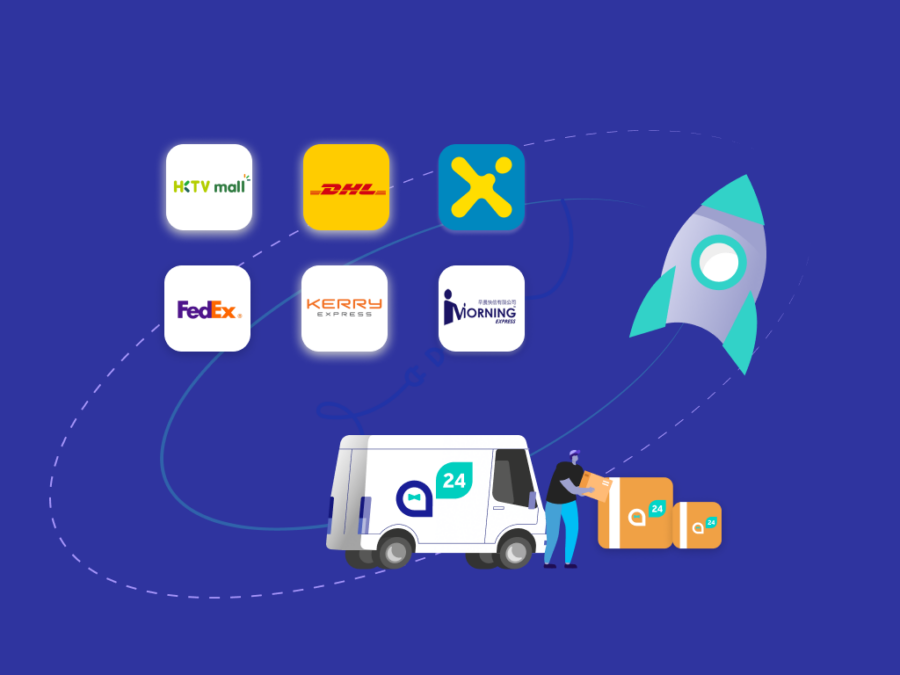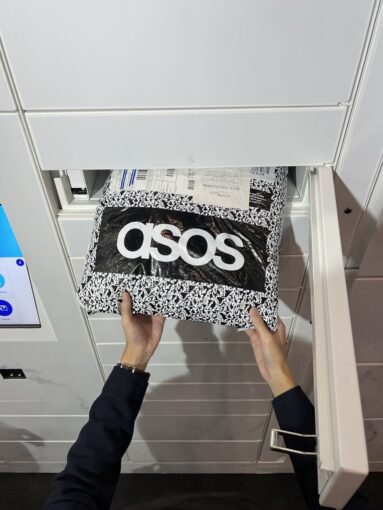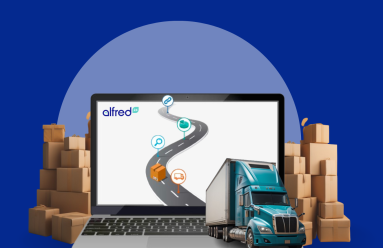3PL Smart Locker Optimization: Unlocking Efficiency and Customer Satisfaction

In recent years, third-party logistics (3PL) providers have been exploring new ways to increase efficiency and improve customer satisfaction.
One innovative solution that has emerged is the use of smart lockers for last-mile delivery.
In this article, we will explore how 3PL providers can optimise the use of smart lockers to unlock efficiency, enhance customer satisfaction and improve sustainability.
Learn about how we implemented smart lockers for 3PL Kerry logistics.
Understanding 3PL Smart Lockers
Smart lockers are secure, electronic storage units that can be used for package delivery and pickup.
They have gained popularity in recent years due to the increasing demand for faster, more convenient delivery options.
3PL providers have recognised the potential of smart lockers for last-mile delivery and have begun to implement them in their operations.
Smart lockers are typically located in public areas such as shopping malls, transit stations, and apartment complexes.
Customers can select a locker as their delivery location during checkout, and the 3PL provider will deliver the package to the locker.
Once the package is delivered, the customer will receive a notification with a unique code that they can use to open the locker and retrieve their package.
The benefits of using smart lockers for last-mile delivery are numerous.
For customers, they offer convenience, flexibility, and the ability to retrieve packages on their own schedule.
For 3PL providers, they offer an efficient and cost-effective solution for last-mile delivery, reducing delivery times, costs, and resource allocation.
Read more about the benefits for everyone of smart lockers in our blog on the topic.
The Need for Optimisation
While smart lockers offer many benefits, there are also challenges that 3PL providers must overcome to fully realise their potential.
These challenges include technical and operational issues, privacy and security concerns, and adoption and integration issues.
To overcome these challenges, 3PL providers must optimise their use of smart lockers.
Optimisation involves using data analysis, automation, and integration with transportation management systems (TMS) to improve efficiency and enhance customer satisfaction.
Best Practices for 3PL Smart Locker Optimisation
To optimise their use of smart lockers, 3PL providers should consider implementing the following best practices:
Data analysis for predictive modelling
Data analysis is crucial for optimising the use of smart lockers.
By analyzing delivery data, 3PL providers can identify patterns and trends in customer behaviour, such as delivery location preferences and delivery times.
This information can be used to predict future demand and optimise delivery routes and schedules.
Automated routing and scheduling
Automated routing and scheduling can help 3PL providers optimise their use of smart lockers.
By using software to plan delivery routes and schedules, 3PL providers can reduce delivery times and costs, while improving resource allocation.
Integration with transportation management systems (TMS)
Integration with transportation management systems (TMS) is critical for optimising the use of smart lockers.
TMS can provide real-time tracking of packages, optimise routing and scheduling, and provide analytics to improve efficiency.
Monitoring and reporting
Monitoring and reporting can help 3PL providers identify areas for improvement and track the success of their smart locker implementation.
By monitoring key performance indicators (KPIs) such as delivery times and customer satisfaction, 3PL providers can identify opportunities for optimization and improve their operations over time.

Impact on Efficiency
Optimizing the use of smart lockers can have a significant impact on efficiency for 3PL providers.
By reducing delivery times, costs, and resource allocation, 3PL providers can increase their capacity and offer faster, more reliable delivery options.
Reduced delivery times
Smart lockers offer a faster delivery option than traditional home delivery.
By using smart lockers, 3PL providers can reduce delivery times and offer more convenient delivery options for customers.
Reduced costs
Smart lockers can also help 3PL providers reduce costs associated with last-mile delivery.
By using smart lockers, 3PL providers can reduce the number of delivery vehicles required for last-mile delivery, which can reduce fuel costs and maintenance expenses.
Improved resource allocation
Smart lockers can also help 3PL providers allocate resources more efficiently.
By using automated routing and scheduling, 3PL providers can optimize delivery routes and schedules to reduce travel time and minimize the number of resources required for delivery.
Impact on Customer Satisfaction
Optimizing the use of smart lockers can also have a significant impact on customer satisfaction.
Convenience
Smart lockers offer a convenient delivery option for customers who may not be available to receive packages at home.
By offering smart lockers as a delivery option, 3PL providers can provide customers with greater flexibility and convenience.
Flexibility
Smart lockers also offer greater flexibility for customers who may need to retrieve their packages outside of regular business hours.
By offering 24/7 access to smart lockers, 3PL providers can accommodate the schedules of their customers and improve their overall satisfaction.
Transparency
Smart lockers also provide greater transparency for customers.
By offering real-time tracking and notifications, customers can stay informed about the status of their package and when it will be available for pickup.

Challenges to Overcome
While there are many benefits to using smart lockers for last-mile delivery, there are also challenges that 3PL providers must overcome to fully realize their potential.
These challenges include technical and operational issues, privacy and security concerns, and adoption and integration issues.
Technical and operational issues
Smart lockers require a certain level of technical expertise to operate, which can be a challenge for 3PL providers who are not familiar with the technology.
Privacy and security concerns
Smart lockers also raise privacy and security concerns for customers.
Customers may be hesitant to use smart lockers due to concerns about theft, data breaches, or privacy violations.
Adoption and integration issues
Adoption and integration can also be a challenge for 3PL providers who are implementing smart lockers.
Integrating smart lockers with existing transportation management systems and processes can be complex, and 3PL providers may need to invest in new technology and training to ensure successful adoption.
Conclusion
Smart lockers offer 3PL providers an innovative solution for last-mile delivery that can unlock efficiency and enhance customer satisfaction.
By optimizing their use of smart lockers through data analysis, automation, integration, and monitoring, 3PL providers can improve their operations and offer faster, more reliable delivery options.
While there are challenges to overcome, the benefits of using smart lockers for last-mile delivery make it a worthwhile investment for 3PL providers looking to improve their operations and customer satisfaction.
Learn about how we implemented smart lockers for 3PL Kerry logistics.
FAQs
Are smart lockers more expensive than traditional delivery methods?
Smart lockers can be more expensive to implement initially, but they can also help 3PL providers reduce costs associated with last-mile delivery over time.
Do customers trust smart lockers?
Privacy and security concerns can be a barrier to adoption for some customers, but many customers find smart lockers to be a convenient and reliable delivery option.
Can smart lockers accommodate packages of all sizes?
Smart lockers come in various sizes, so they can accommodate packages of different sizes, from small parcels to large packages.
Are smart lockers difficult to operate?
Smart lockers require a certain level of technical expertise to operate, but 3PL providers can provide training and support
How can 3PL providers ensure the security of smart lockers?
3PL providers can implement security measures such as surveillance cameras, access control systems, and tamper-evident features to ensure the security of smart lockers and the packages stored inside.
How can 3PL providers integrate smart lockers with existing operations?
3PL providers can integrate smart lockers with their existing transportation management systems and processes by investing in technology that allows for seamless data exchange and automation.
Can smart lockers improve delivery speed?
Smart lockers can help improve delivery speed by reducing the time and resources required for last-mile delivery. By optimizing delivery routes and schedules, 3PL providers can offer faster and more reliable delivery options to cus


